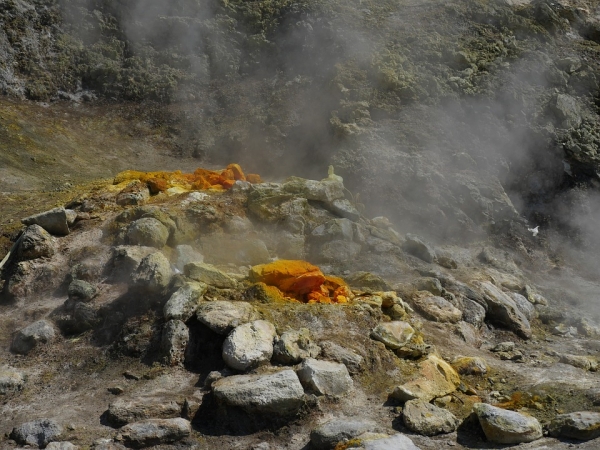The Phlegraean volcanic fields just west of Naples, Italy, are among the top eight emitters of volcanic carbon dioxide in the world. Since 2005, the Solfatara crater—one of many circular depressions in the landscape left by a long history of eruptions—has been emitting increased volumes of gas. Today it emits 4,000-5,000 tons of carbon dioxide each day, equivalent to the emissions from burning ~500,000 gallons of gasoline. In a new paper published ahead of print in Geology on Thursday, researchers estimate that as much as 20%–40% of the current carbon dioxide emissions are from the dissolution of calcite in the rocks, while 60%–80% is from underground magma.
“Estimating the source of the carbon dioxide is important to properly reconstruct what is happening in the magmatic system and the hydrothermal system,” says Gianmarco Buono, a volcanologist at the Italian National Institute of Geophysics and Volcanology and lead author of the study. “Our aim is to provide a tool to better discriminate the contribution of magmatic and non-magmatic carbon dioxide that can also be applied to other systems.”
When magma moves toward Earth’s surface, the decreasing pressure on the magma results in degassing—the release of gases that were previously trapped inside the magma—including water vapor, carbon dioxide, and sulfur dioxide. Scientists monitor volcanoes for unrest and possible eruptions using a variety of observations—detecting earthquakes and tremors related to magma movement, taking detailed measurements of ground deformation, and assessing the types and volumes of gases released at the surface from fumaroles—openings in the earth that emit steam and other gases.
Eruptions are often preceded by increased fluxes of gas, but that does not mean that every increase in gas emissions will be followed by an eruption. It is also possible for carbon dioxide to come from sources besides magma. Interaction between hot underground fluids and host rocks can also release carbon dioxide.
Read more at Geological Society of America
Photo Credit: MonikaP via Pixabay


